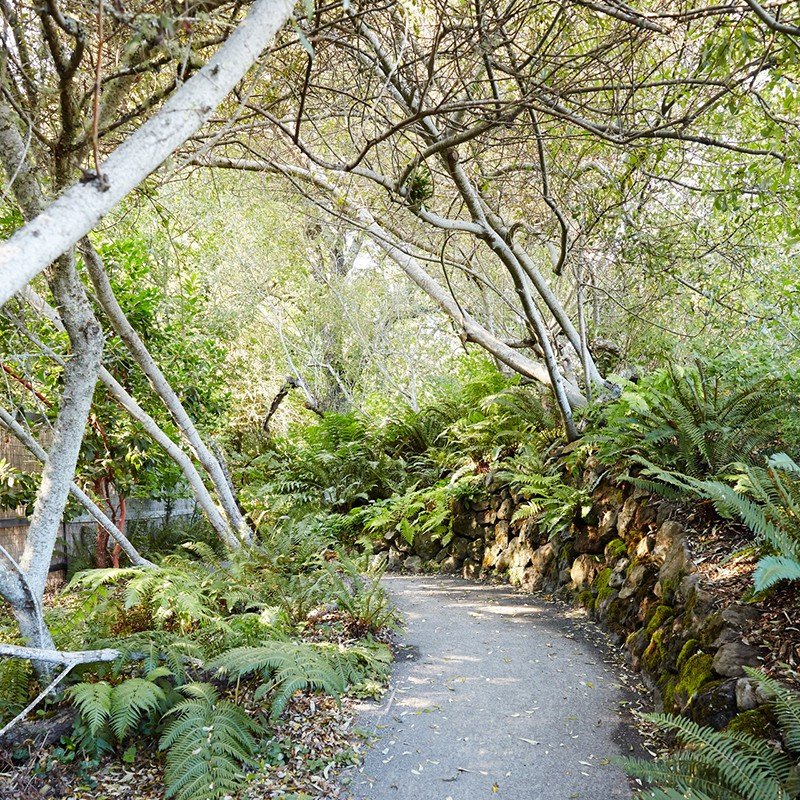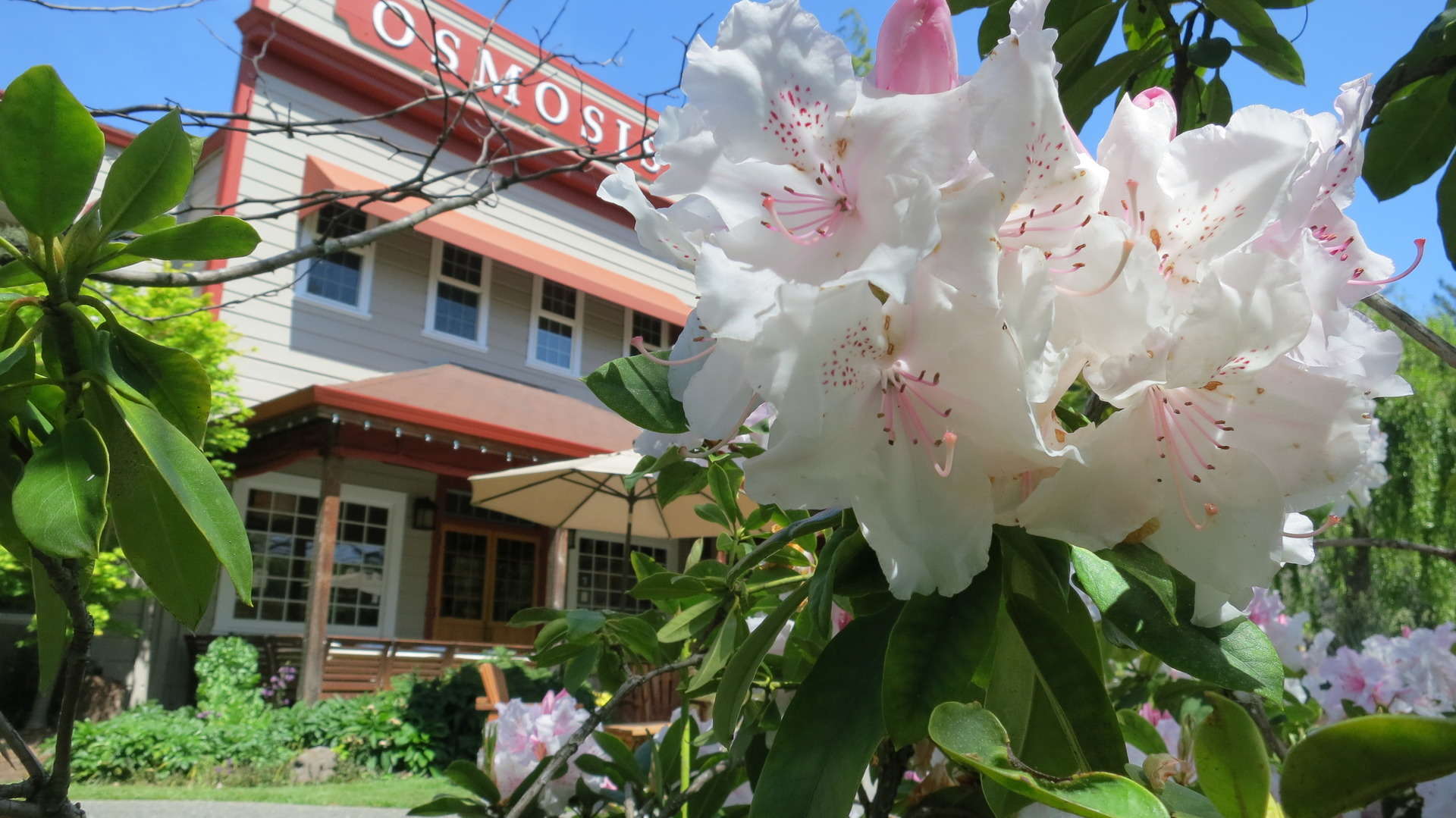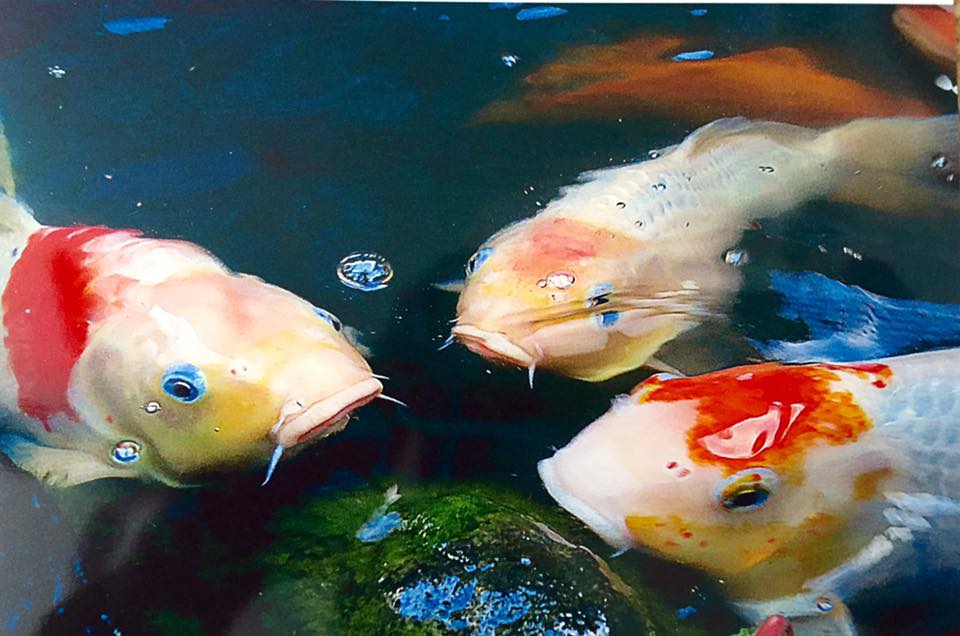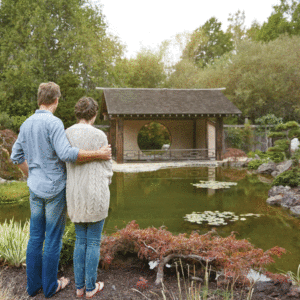Garden Journal for Summer 2016

Master Pruner at Osmosis
by Michael Alliger
The summer solstice finds us focusing on California native plants used here in the Osmosis gardens. The theme of our garden design is California Asian, that is to say, a garden structured and pruned in the Asian way yet representative of our place here on this continent through the employment of some native plant material in addition to plants from Asia.
The development of Asian gardens has been in play for literally a thousand years. The pruning techniques, plant and stone choices, and spatial relationships have been refined through trial and error as well as bursts of creative genius. The appropriate plant material has been culled from the native landscape again through trial and error. Appropriateness refers largely to prunability: can a plant be maintained at the human scale required by the garden plan while still evoking the essence of the natural surroundings. This process of local plant selection, while age-old in Japan, is in its infancy here in California. It is the goal of the Osmosis garden not only to create a sense of place (home) by using native plants but also to further the cultivation of them. Our garden is somewhat of a proving ground in that regard; experimenting with the possibilities and limitations of the plants surrounding us.
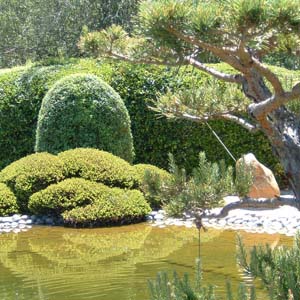
Manzanita Okarikomi
The plant choices we have made vary in their adaptability from co-operative to questionable to doubtful. Among those most easily facilitated are the vine maple, ceanothus, two forms of ribes (currant) and manzanita. The vine maple is pruned as any Japanese maple with reduction for scale and thinning for appearance. Ceanothus gets cutback as the new growth extends after flowering. This plant is best kept full and usually either grouped or with accompanying plants beneath as they tend to defoliate below. Our pink flowering currant represents one of spring’s first blooms while also providing a screen along a path. Most pruning here is done in winter to contain the plant from its inherent wildness keeping it the right height and thickness and out of the path. We have found that by shearing the sprawling ribes viburnifolium we can create a form resembling the Japanese tamamono or horizontal oval. Manzanita has been used in several ways from shearing into O-karikomi style (contoured drift) to general screen to focal point at front entry sign. Each of these is pruned in late spring-summer as new growth follows flowering. The shearing of Manzanita definitely falls into the category of experimentation but has shown to be effective for a minimum of 10 years.
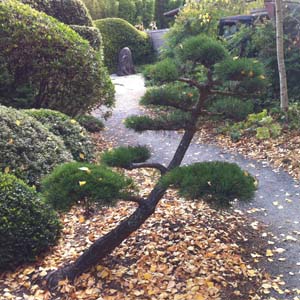
Shore Pine at Osmosis
Among the plants still in the discovery stage or requiring fairly adept pruning would be the shore pine and Douglas fir (surprisingly!). Without too much difficulty the shore pine can be pruned in the style of Japanese black pine by a skilled technician.
The Douglas fir lends itself to pruning quite readily as it exhibits the ability to freely break bud on bare wood, a characteristic rarely found in a conifer. This back budding allows for wholesale cutback and general pruning. The possibilities are seemingly limited only by the imagination and talent of the pruner. We have two that are documented to be over 50 years old and neither is over 7’ and both are full and lush shrub forms.
The tree with which we have had some success though cannot whole-heartedly recommend is the Monterey cypress. While this tree, known along the Pacific coast for it’s fabulous windswept shapes, can reach 40 to 60’ our specimen has remained at no more than 18’ with serious reductive pruning. The tree’s rapid growth and susceptibility to disease and infestation from hard pruning relegate it to doubtful in an ornamental garden.
We have barely touched the surface in our survey of native plants though some of the others tried include huckleberry, snowbell, and hazelnut. To find ourselves at the initiatory stage of this endless exploration gives a greater context to our deployment of Asian pruning and design techniques while lending a more familiar feel to exotic aesthetics.
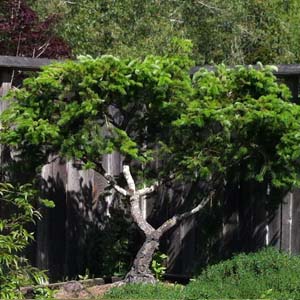
Douglas Fir at Osmosis
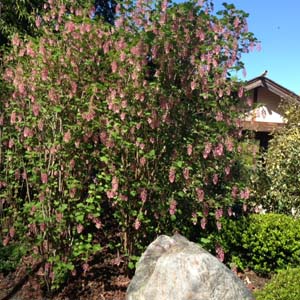
Pink Flowering Ribe at Osmosis

